Griffith Park Observatory
Great places to allow your mind to expand
Off To See The Universe With Brian And Jan 9/30/2015 (Page Two)
Our tummies are full so it is time to explore!
Did You Know? - Griffith Observatory is a facility in Los Angeles, California sitting on the south-facing slope of Mount Hollywood in Los Angeles' Griffith Park. It commands a view of the Los Angeles Basin, including Downtown Los Angeles to the southeast, Hollywood to the south, and the Pacific Ocean to the southwest. The observatory is a popular tourist attraction with a great view of the Hollywood sign, and an extensive array of space and science-related displays. Since the observatory opened in 1935, admission has been free, in accordance with Griffith's will.
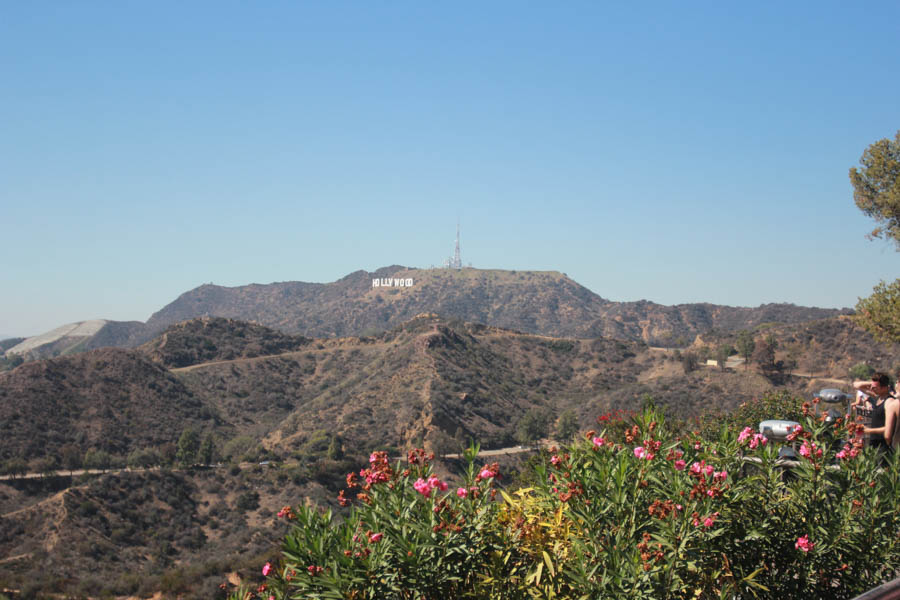
The Hollywood sign is just across the hill
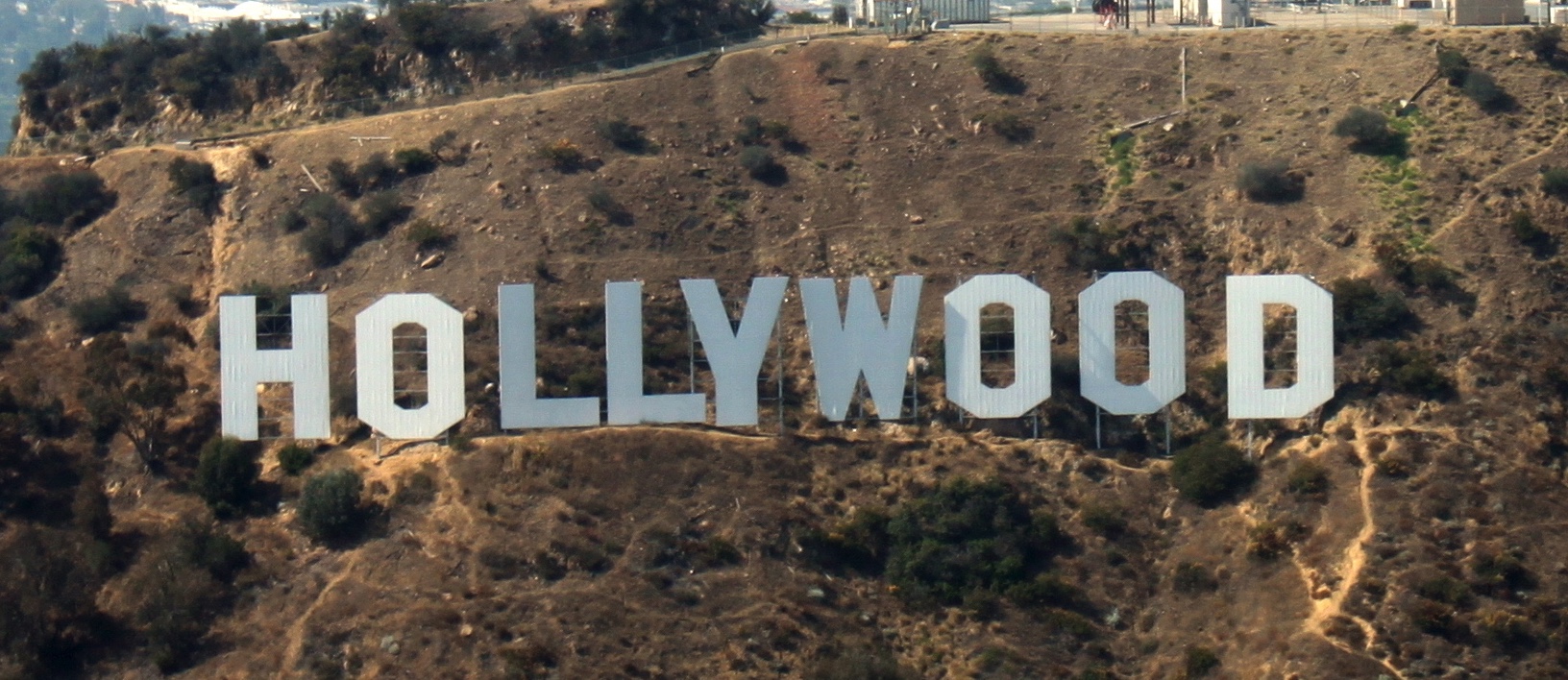
Click for full sized image
Did You Know? - The Hollywood Sign (formerly the Hollywoodland Sign) is a landmark and American cultural icon located in Los Angeles, California.
It is situated on Mount Lee, in the Hollywood Hills area of the Santa Monica Mountains. The sign overlooks Hollywood, Los Angeles.
"HOLLYWOOD" is spelled out in 45-foot-tall (14 m) white capital letters and is 350 feet (110 m) long.
It was originally created in 1923 as an advertisement for a local real estate development, but it garnered increasing recognition after the sign was left up.
The sign was a frequent target of pranks and vandalism, but it has since undergone restoration, including the installation of a security system to deter vandalism. The sign is protected and promoted by The Trust For Public Land, a nonprofit organization, while its site and the surrounding land are part of Griffith Park.
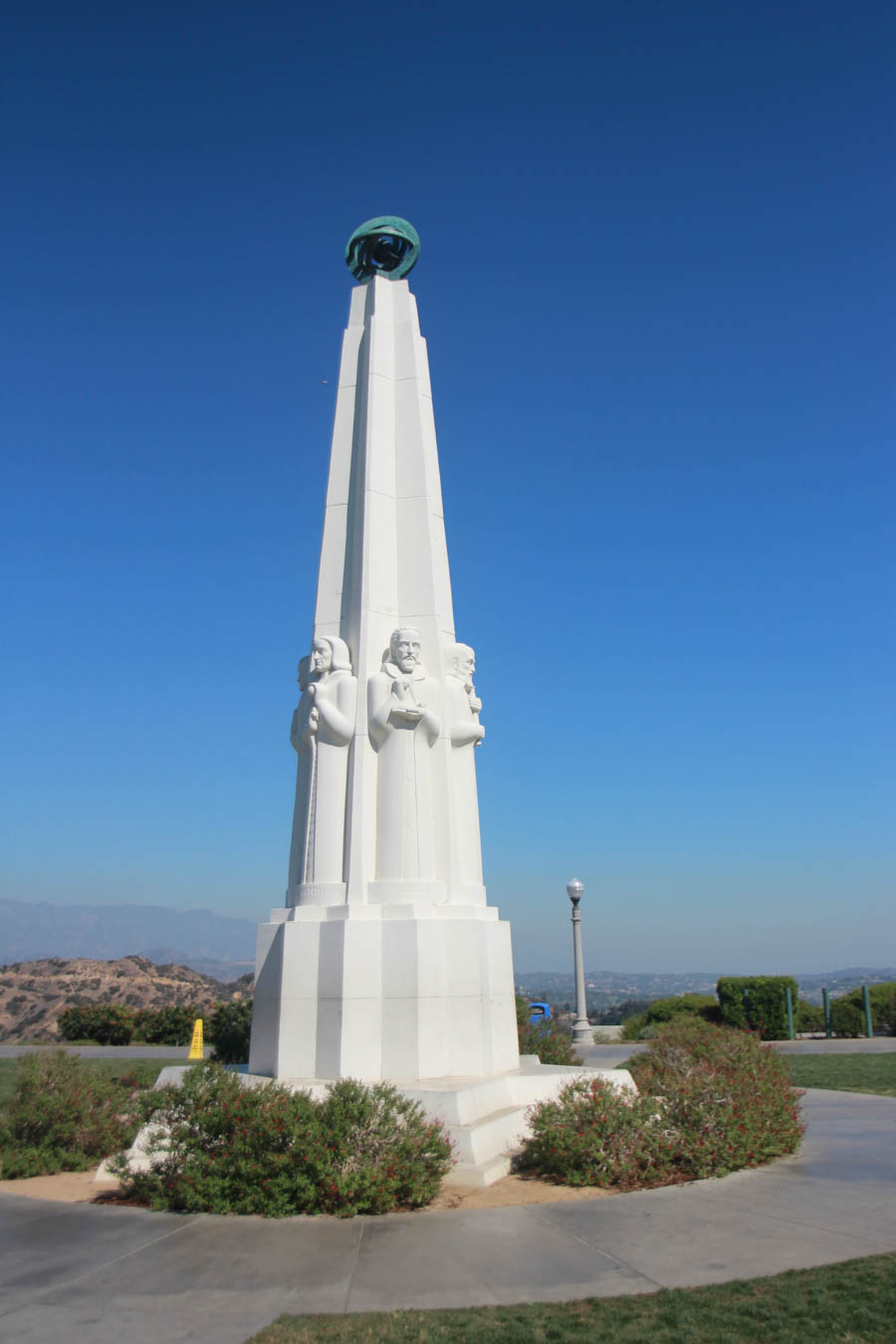
The scientists always looking out
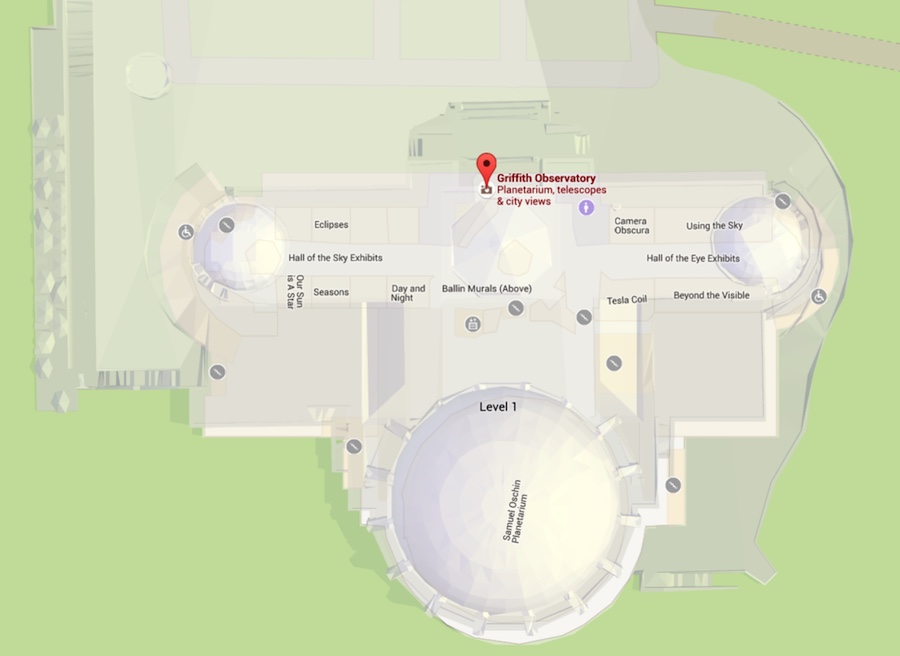
The grounds

We were a little confused?
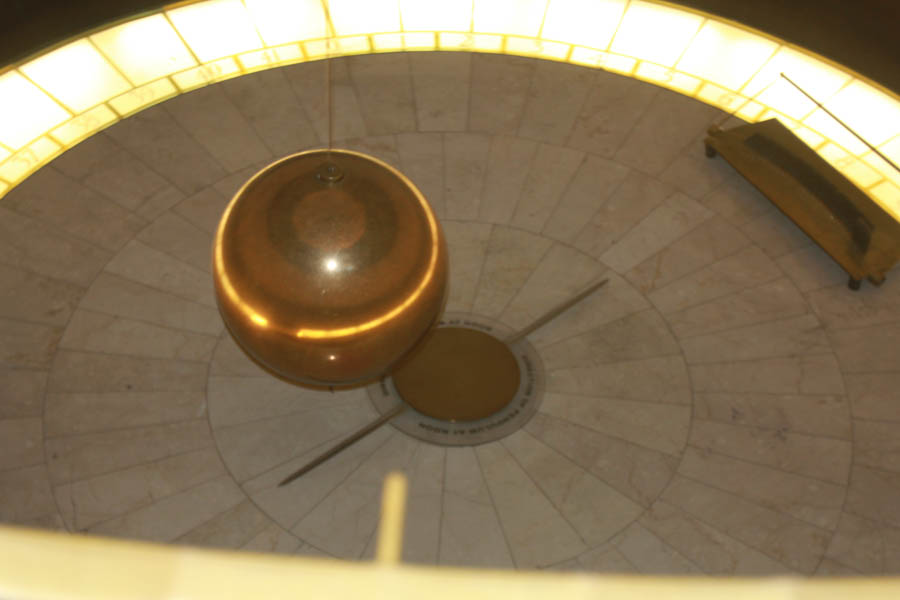
The pendulum is huge

Directly above the pendulum the wire goes into a ball-bearing mechanism

It amazes everyone... Well, most everyone!
Did You Know? - The gently swaying Foucault Pendulum in the W.M. Keck Foundation Central Rotunda has long been a visitor favorite since the building opened in 1935. One of the largest such devices in the world, the fully restored pendulum is actually an elegant scientific instrument which demonstrates the Earth's rotation.
The 240-pound bronze ball, suspended by a cable 40 feet long, swings in a constant direction while the Earth turns beneath it. The pendulum is mounted to a bearing in the rotunda ceiling that does not turn with the building as it rotates with the Earth. A ring magnet at the bearing gives a little tug on each swing of the pendulum to keep the pendulum in motion. As the day passes, the pendulum knocks over pegs set up in the pendulum pit and indicates the progress of rotation.
To The Planetarium
With its spectacular Zeiss star projector, laser digital projection system, state-of-the-art aluminum dome, comfy seats, sound system, and theatrical lighting, the 290-seat Samuel Oschin Planetarium theater is the finest planetarium in the world. Every show is presented by a live, engaging storyteller.

Very restful!
Did You Know? - Centered in the Universe asks fundamental questions about our place in the Universe. Who are we? Where did we come from? Why is the world the way it is? Stunning full-dome video transports us back in time, from the Library of Alexandria, to Galileo's courtyard, to the world's most powerful telescopes in a quest for answers among the stars. Travel through time and space back to the big bang and through a universe filled with galaxies to find our cosmic origins and discover our true place in the cosmos.
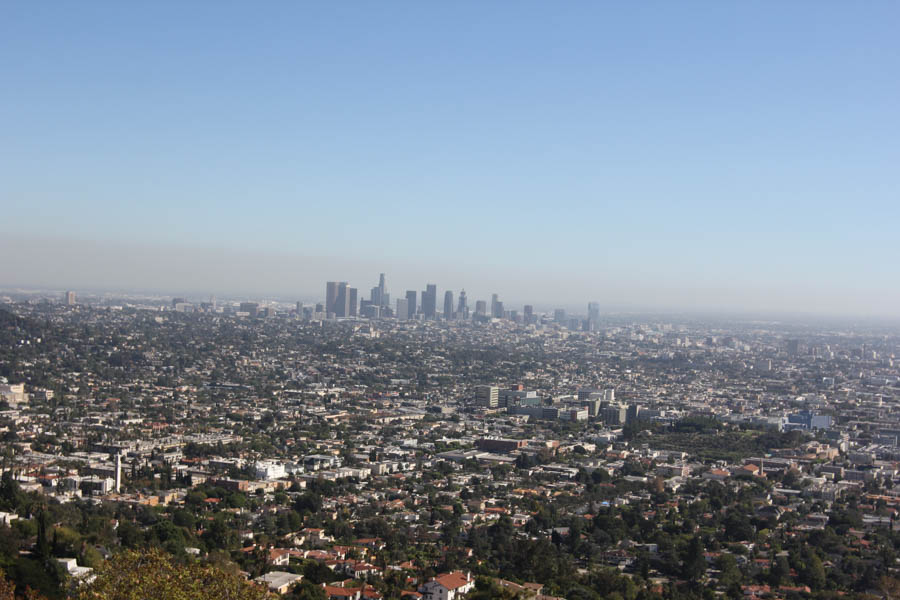
Downtown Los Angeles is just a few miles away!
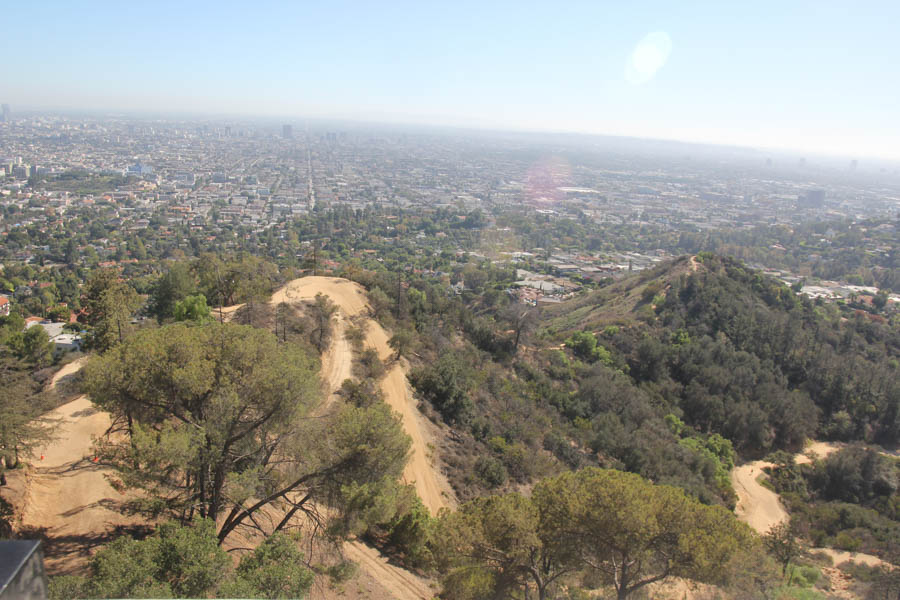
Paths lead to the Observatory
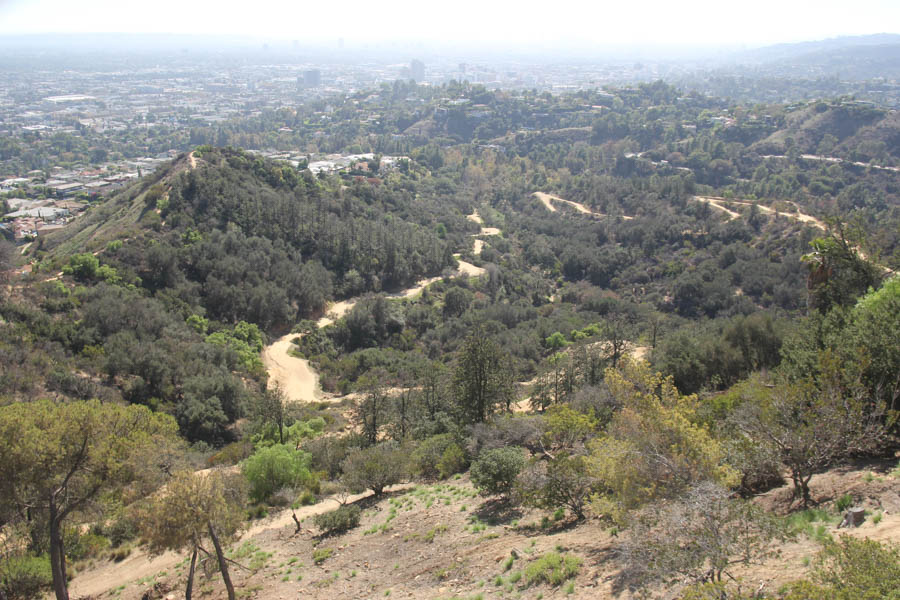
Ready for a walk? Not in 90 degree weather!

The solar observatory is on the top of the building
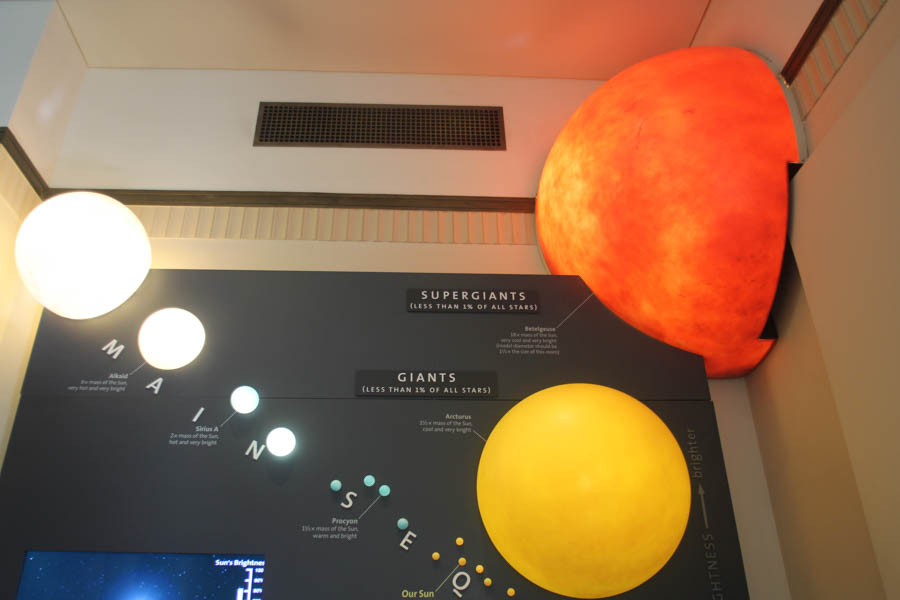
The displays are quite interesting

The sun observatory is full of instruments
Did You Know? - spectrohelioscope is a type of solar telescope designed by George Ellery Hale in 1924 to allow the Sun to be viewed in a selected wavelength of light. The name comes from three Latin-based words: Spectro, referring to the optical spectrum, Helio, referring to the Sun and Scope, as in telescope.

The displays are well done!
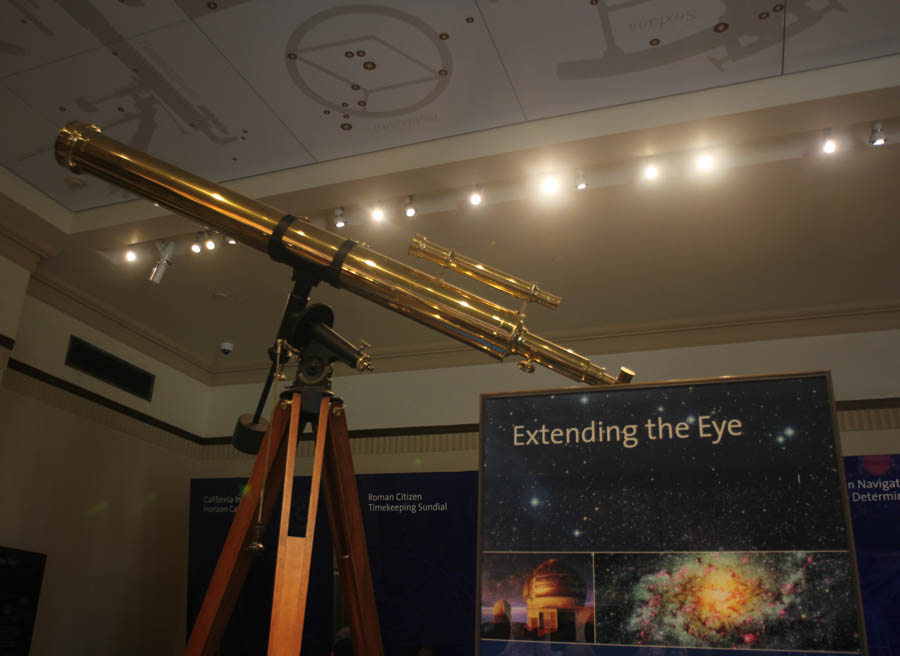
The telescope display ranges from a 6" scope to a model of Palomar
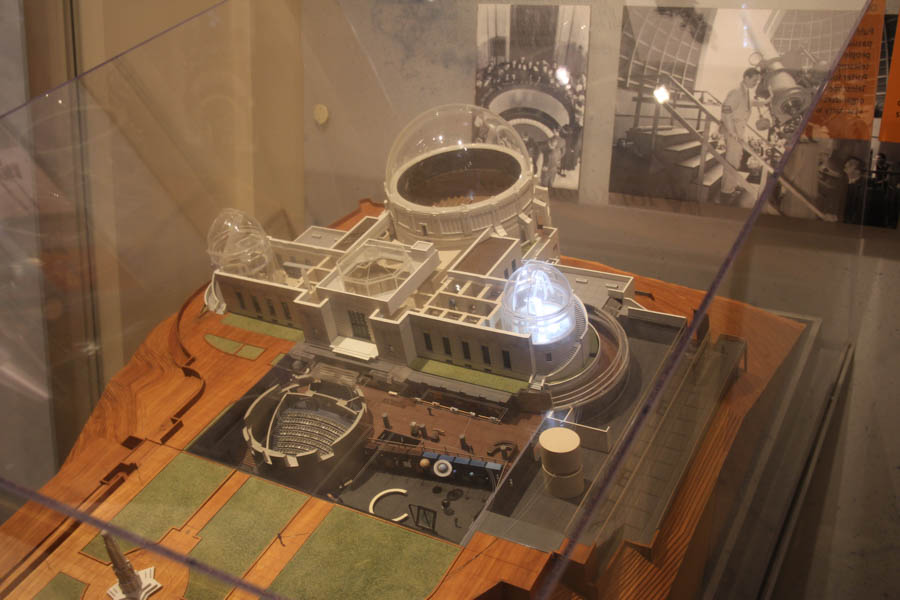
The model of the underground portion of the observatory is on display

Grindg the Palomar glass took eleven years
Did You Know? - The telescope is more a discovery of optical craftsmen than an invention of a scientist. The lens and the properties of refracting and reflecting light had been known since antiquity and theory on how they worked were developed by ancient Greek philosophers, preserved and expanded on in the medieval Islamic world, and had reached a significantly advanced state by the time of the telescope's invention in early modern Europe.
But the most significant step cited in the invention of the telescope was the development of lens manufacture for spectacles, first in Venice and Florence in the thirteenth century, and later in the spectacle making centers in both the Netherlands and Germany.
It is in the Netherlands in 1608 where the first recorded optical telescopes (refracting telescopes) appeared. The invention is credited to the spectacle makers Hans Lippershey and Zacharias Janssen in Middelburg, and the instrument-maker and optician Jacob Metius of Alkmaar.

The glass reflector was an amazing feat

Almost 100 years old and still in operation!
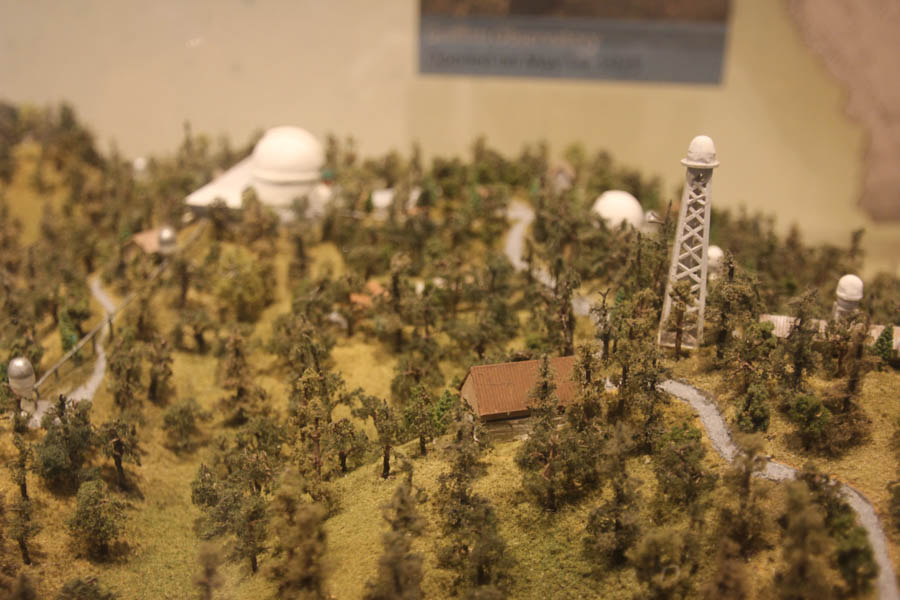
Neat model of the Mount Wilson area
Did You Know? - Mount Wilson is one of the better-known peaks of the San Gabriel Mountains, located within the San Gabriel Mountains National Monument and Angeles National Forest in Los Angeles County, California.
It is the location of the Mount Wilson Observatory, and has become an astronomical center of Southern California with 60-inch (1,524 mm) and 100-inch (2,540 mm) telescopes, and 60-foot-tall (18.3 m) and 150-foot-tall (45.7 m) solar towers.
The summit is at 5,710 feet (1,740 m). While not the tallest peak in its vicinity, it is high enough in elevation that snow can sometimes interrupt astronomical activities on the mountain. All of the mountains south of the summit are far shorter leading to unobstructed views across the Los Angeles Basin out to the Pacific Ocean. On an extremely clear day Santa Catalina Island, California, some 70 miles south, is visible, with the horizon stretching another 30 miles beyond that.
Now We Go Down Under The Front Lawn Area
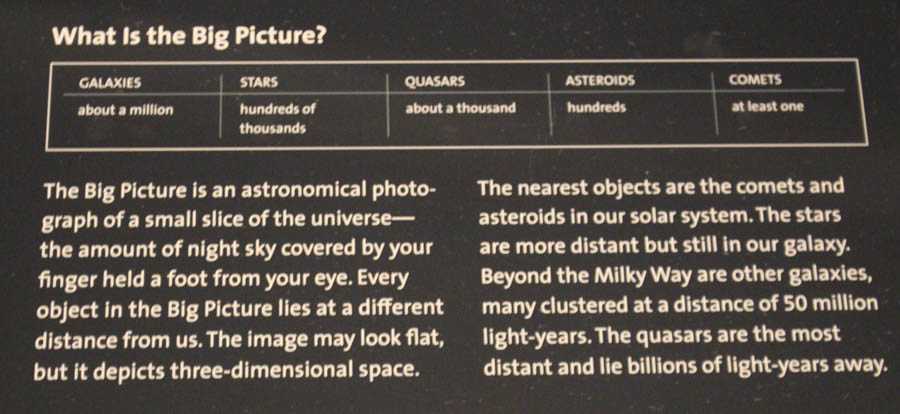
Truly amazing

Just a sliver of the sky is presented on a long wall

Difficult to see but on the wall one can see a million galaxies

Scale models of our solcar system are an eye opener

Mars and the Earth seem pretty small compared to Neptune!
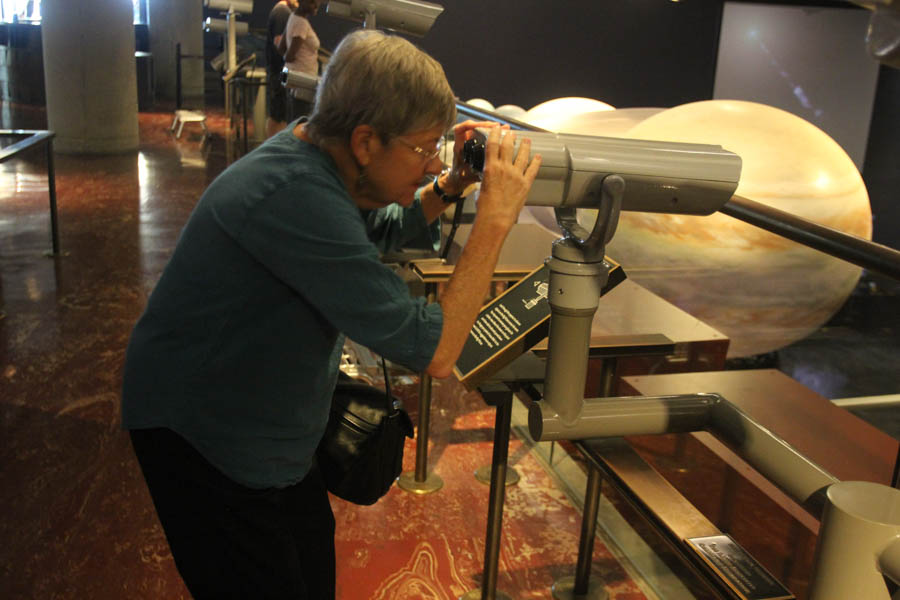
Sue eyes the wall
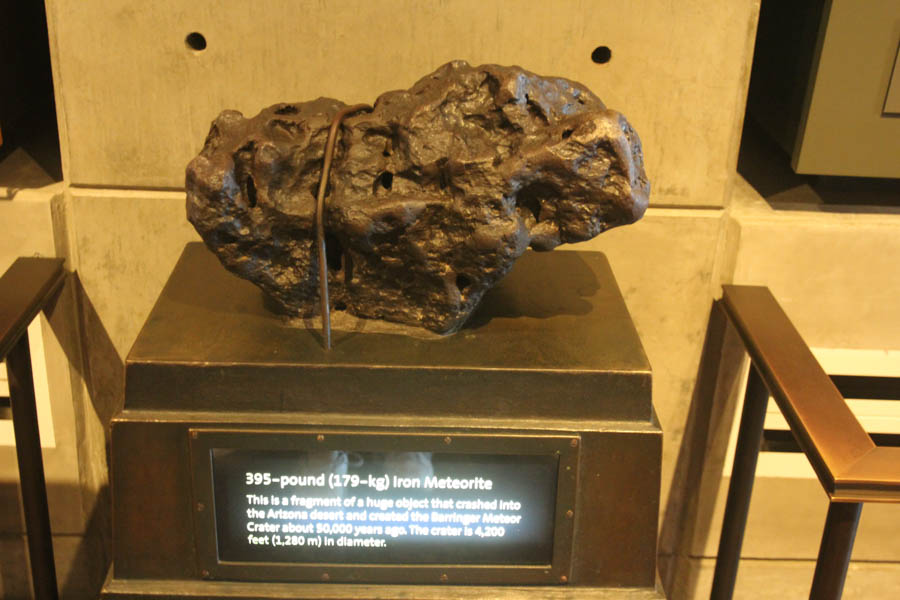
Four hundred pounds of meterorite... Must have been a large explosion
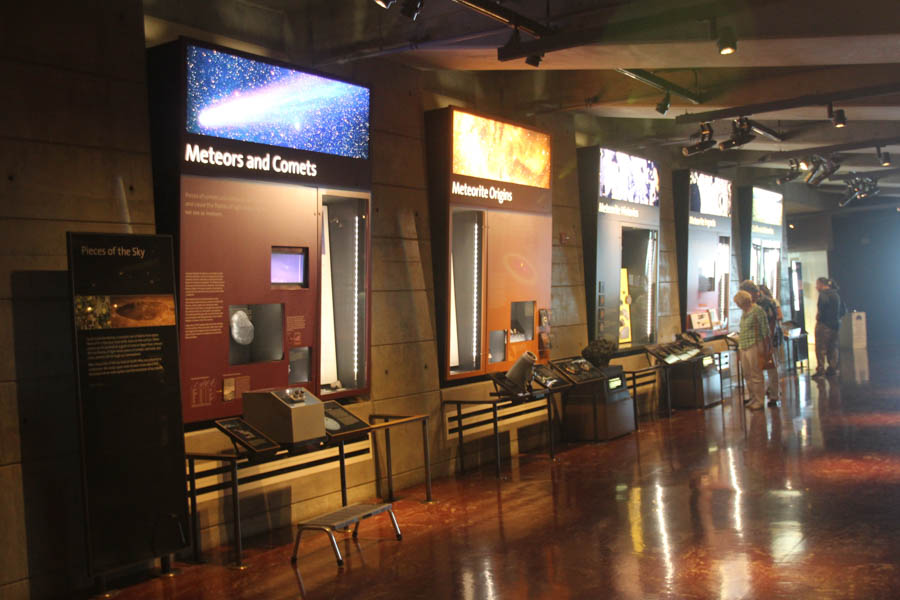
Oodles of buttons to push

The theater seets 200 people!
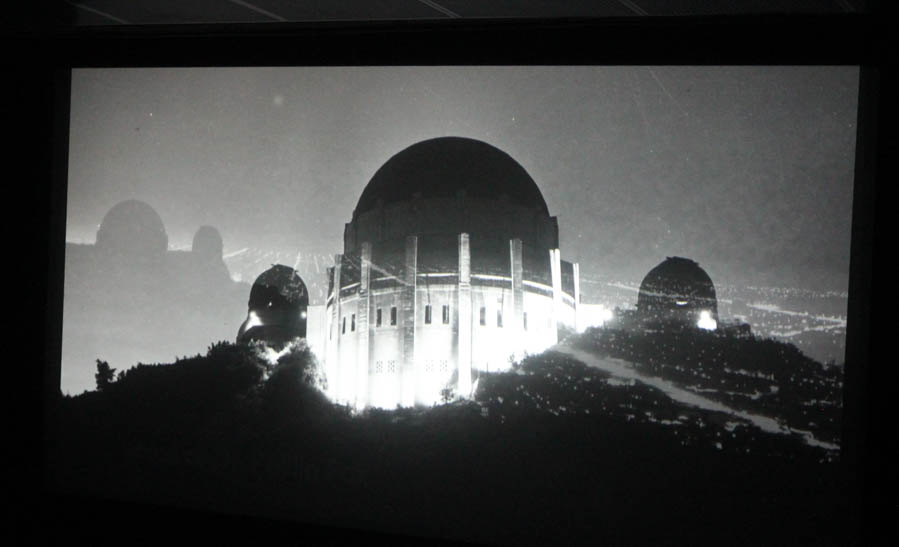
The observatory has been in the movies since it was built
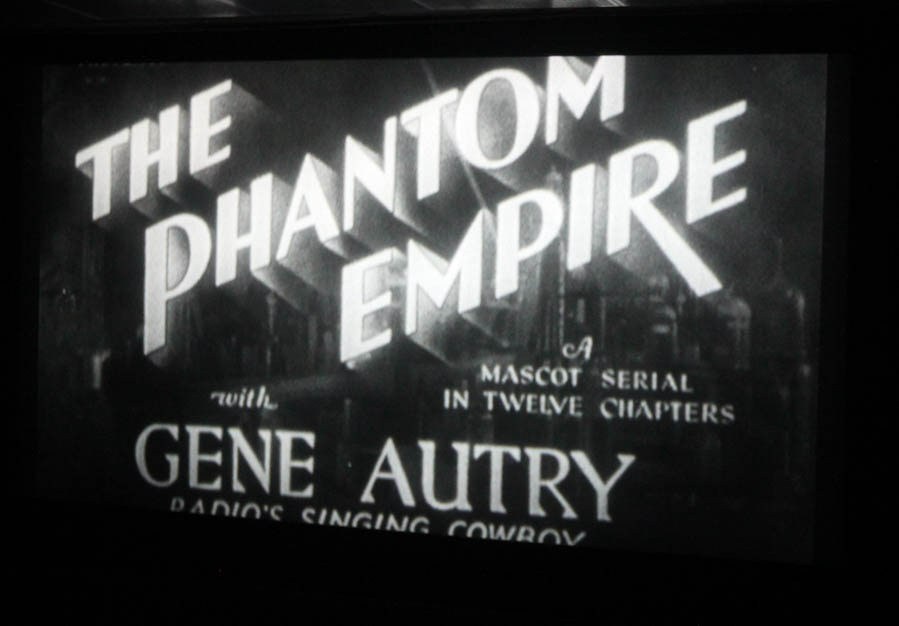
Terror movies...
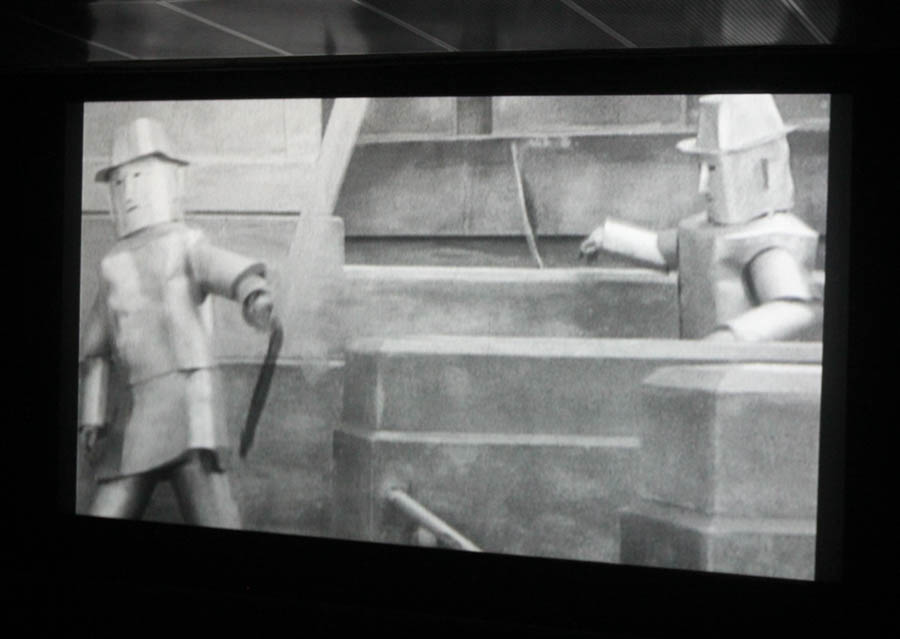
The robots took over the observatory!

Astronauts trained at Griffith because of some of its unique visuales

Leonard Nimoy was a supporter of the Observatory
Did You Know? - Leonard Simon Nimoy (/ˈniːmɔɪ/; March 26, 1931 – February 27, 2015) was an American actor, film director, photographer, author, singer, and songwriter. He was known for his role as Mr. Spock of the Star Trek franchise, a character he portrayed in television and film from a pilot episode shot in late 1964 to his final film performance released in 2013.
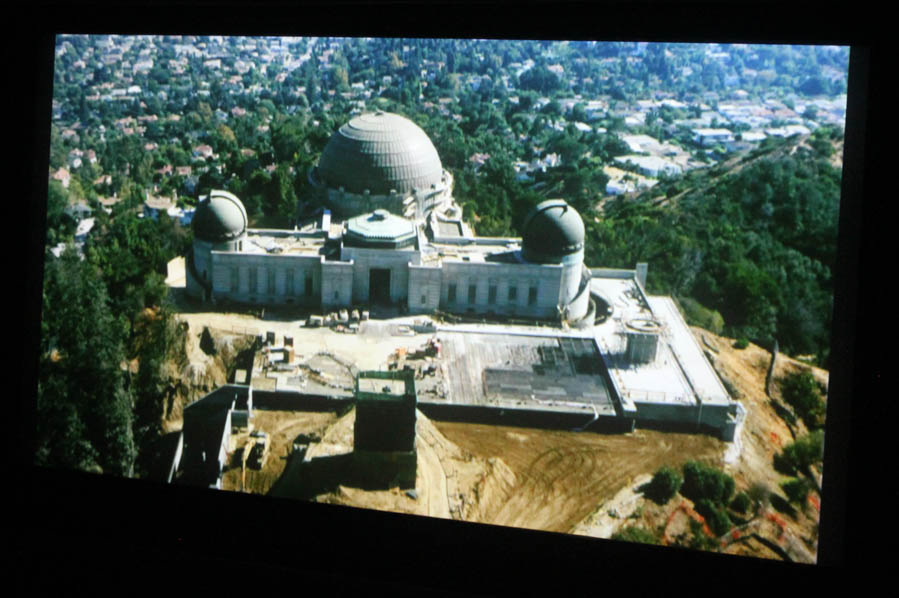
Under construction!

On our way home!
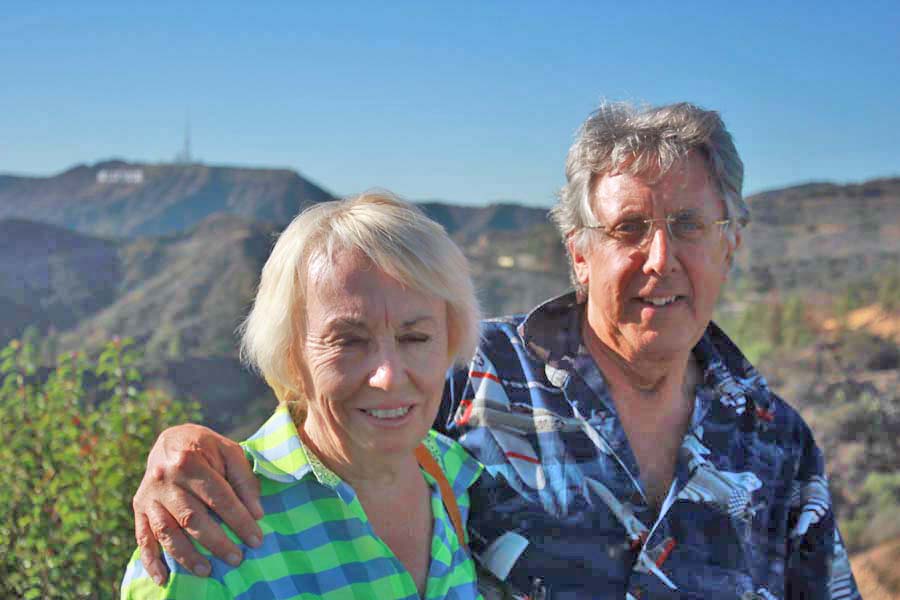
On our way to Old Ranch for a cocktail!

Sound: Theme From Star Trek